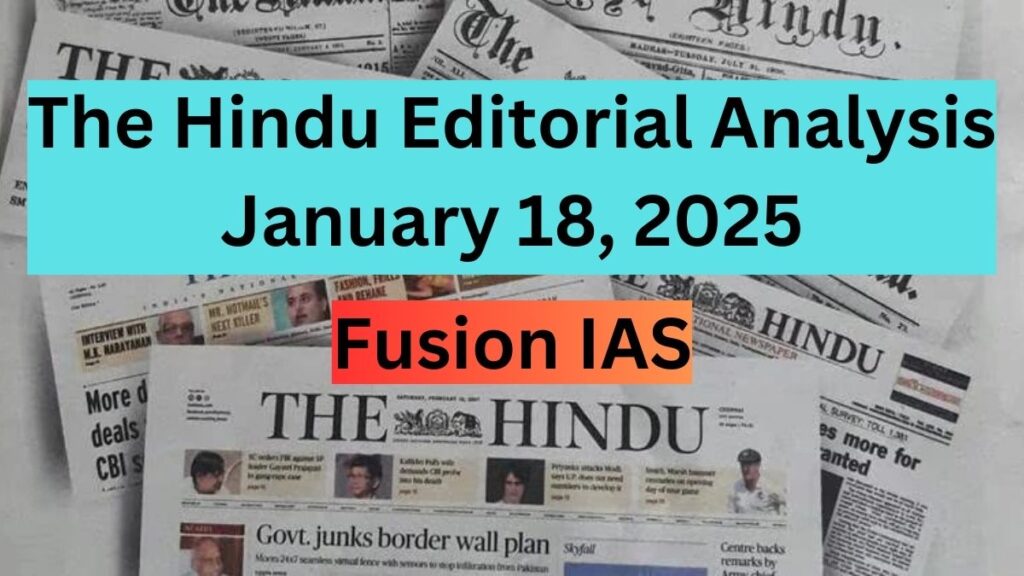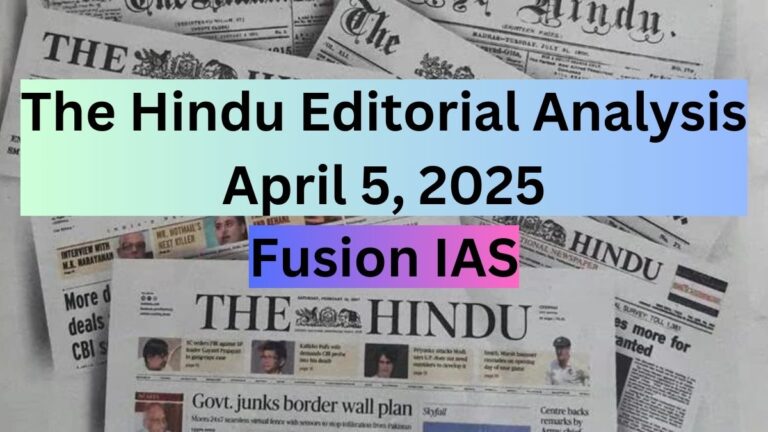
The Hindu editorials are a crucial resource for understanding key national and international issues. This analysis simplifies complex topics, highlights key points, and offers critical insights, making it an essential tool for competitive exam preparation like UPSC CSE and developing a well-rounded perspective on current affairs.
1. Inflation matrix: On the numbers and trends
The article analyzes the inflation trends in India, with a focus on December’s price rise figures, which eased slightly to 5.22%, marking a four-month low. However, this reduction is not significant enough to bring substantial relief to consumers. Key takeaways include:
- Mild Easing in Inflation: The Consumer Price Index (CPI) showed a marginal decline from 5.5% in November to 5.22% in December. The easing was mainly due to a sequential reduction in food prices, though food inflation remained elevated at 8.4%. Vegetables saw a reduction in inflation from 29.3% to 26.6%, but prices were still relatively high compared to the previous year.
- Food Inflation Trends: Despite some moderation, inflation in food items like edible oils (14.6%) and potatoes (68.2%) saw sharp increases in December. Eggs, meat, and fruits also experienced higher inflation. This suggests that while some food items may ease, the prices of critical ingredients are rising, impacting household budgets.
- Impact of Wholesale Price Inflation: Inflation in wholesale prices is accelerating, indicating that the cost pressures could be passed onto consumers in the near future. This is especially concerning for both food and manufactured products.
- Policy Considerations: There is pressure on the Reserve Bank of India (RBI) to cut interest rates to stimulate consumption and economic growth. However, the government and industry acknowledge that reducing rates without addressing food inflation may not be effective. The central bank aims for a long-term alignment of inflation with its 4% target, which complicates the decision-making process for rate cuts.
- Fiscal and External Factors: The Budget for 2025-26 could play a role in easing price pressures if tangible measures are introduced. Additionally, the weakening of the rupee against the dollar and rising global oil prices add new challenges, increasing the risk of imported inflation. A balanced, nuanced approach is needed from policymakers to avoid exacerbating the situation.
2. India’s real growth rate and the forecast
The article discusses India’s real GDP growth rate projections, reflecting on the performance for 2024-25 and the outlook for 2025-26 and beyond. Key highlights include:
- Growth in 2024-25: The First Advance Estimates (FAE) show a real GDP growth of 6.4%, slightly below the RBI’s revised estimate of 6.6% and the Union Budget’s projection of 10.5% nominal GDP growth. However, the growth is expected to improve in the second half of the fiscal year, with a 6.7% growth forecast for H2, compared to 6% in the first half. Despite this, the growth rate for 2024-25 is lower than the previous year’s 8.2%, primarily due to a sharp slowdown in the manufacturing sector, which dropped from 9.9% in 2023-24 to 5.3% in 2024-25.
- Capital Expenditure and Growth Prospects: A key reason for the lower growth is the slowdown in government capital expenditure, which has been negative at -12.3%. The government needs to accelerate its capital expenditure in the coming months and in 2025-26 to stimulate private investment and overall growth.
- Outlook for 2025-26: For the next fiscal year, a 6.5% real GDP growth rate is seen as realistic, with Gross Fixed Capital Formation expected to stabilize at around 33.4%. This projection is in line with the IMF’s forecast for India over the next five years. Global conditions, especially the impact of global oil prices and economic policies, will also play a role in influencing growth. The government must ensure sustained investment to drive growth and attract private sector participation.
- Medium-Term Growth Expectations: India’s potential growth rate for the medium term is expected to be around 6.5%. If global conditions improve and exports become a larger contributor to GDP, growth could potentially touch 7%. Over the next two and a half decades, maintaining this growth rate could help India reach a per capita GDP level consistent with developed countries, but achieving 6.5% growth may become harder as the economy matures.
- Conclusion: While the 6.4% growth rate in 2024-25 is lower than the previous year, it should not be seen as disappointing given India’s potential growth rate of 6.5%. The 8.2% growth in 2023-24 should be viewed as an exceptional spike, not a sustainable trend. The real challenge will be maintaining a steady growth trajectory as the economy grows in size.
3. The multiple layers of the Gaza ceasefire
Disclaimer:
This analysis is based on the editorial content published in The Hindu and is intended solely for informational and educational purposes. The views, opinions, and interpretations expressed herein are those of the author of original article. Readers are encouraged to refer to the original article for complete context and to exercise their own judgment while interpreting the analysis. The analysis does not constitute professional advice or endorsement of any political, economic, or social perspective.
Follow Fusion IAS


